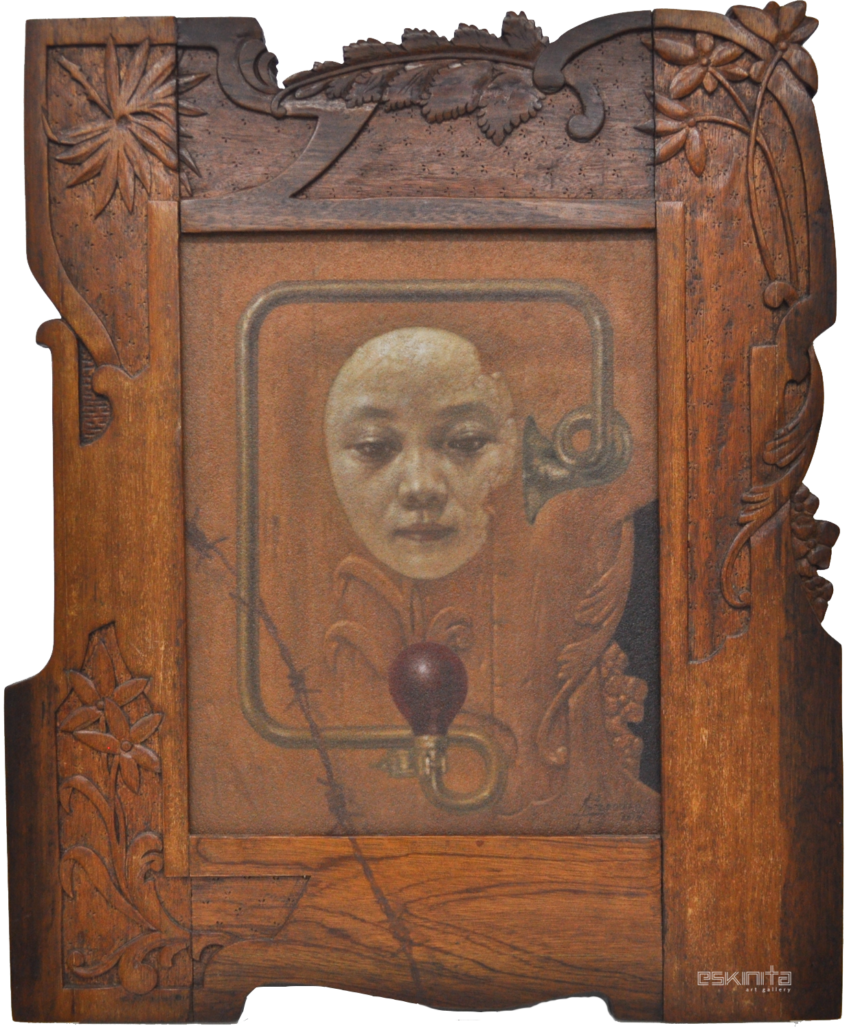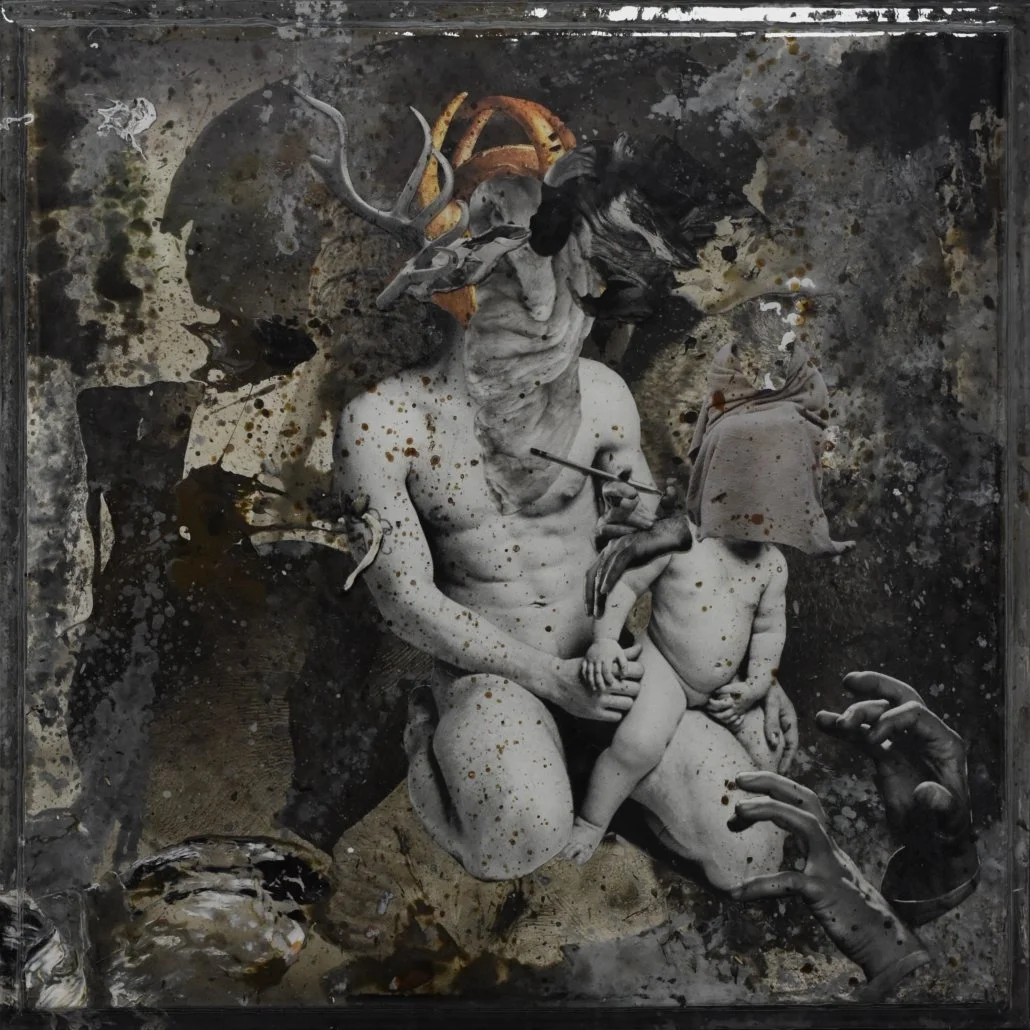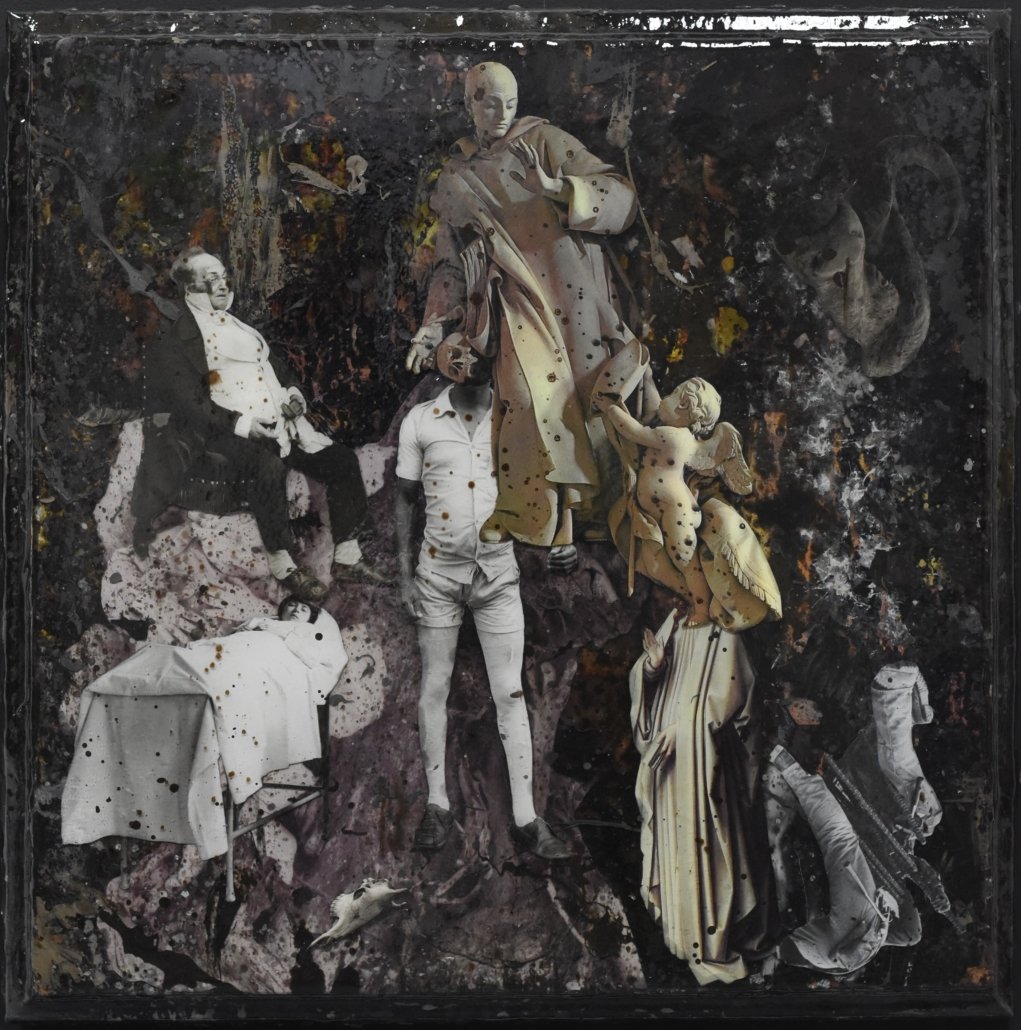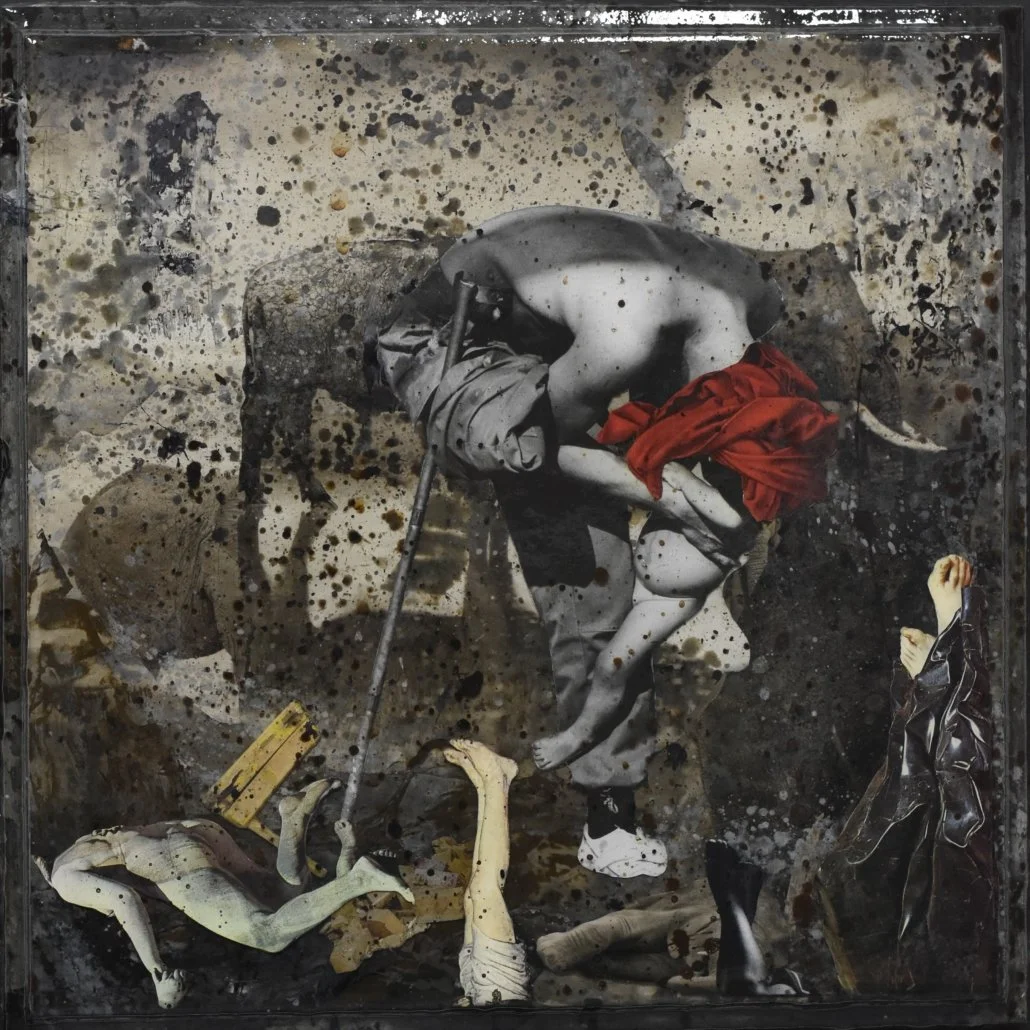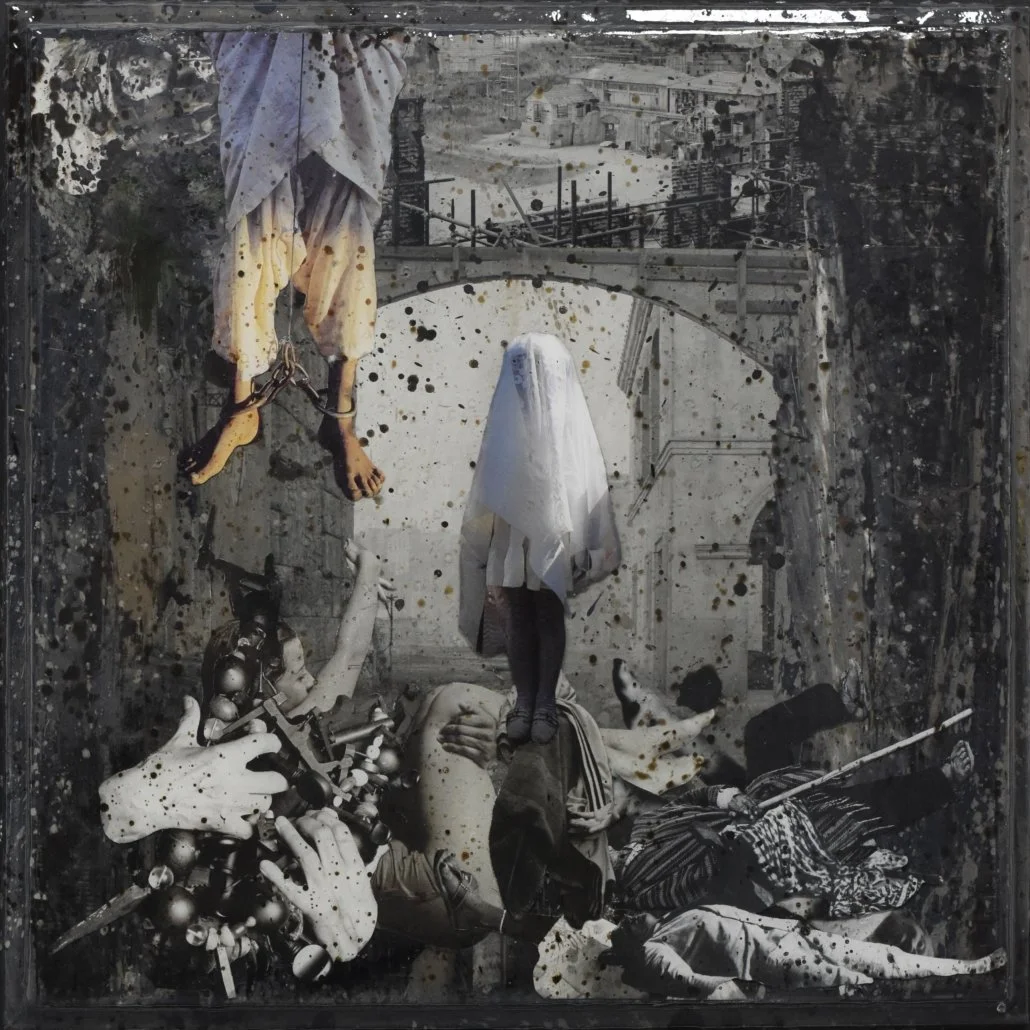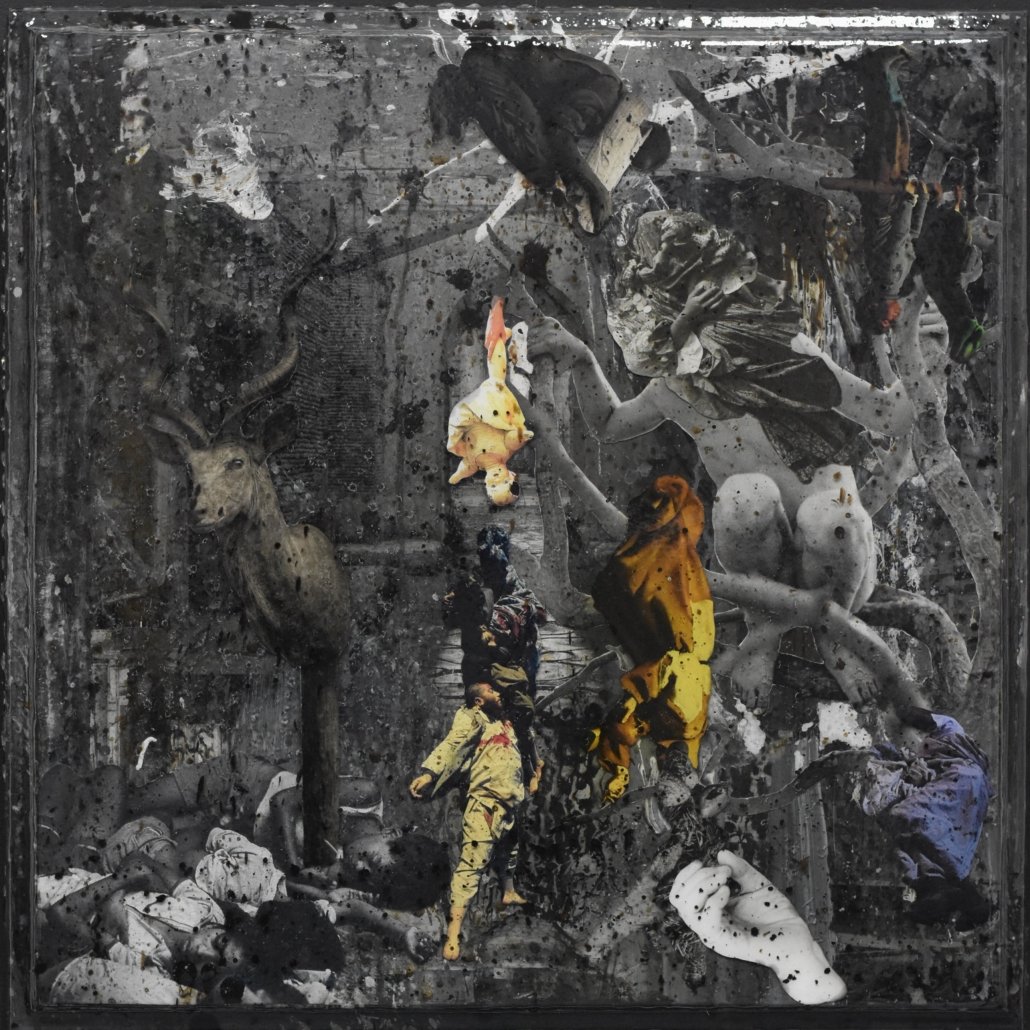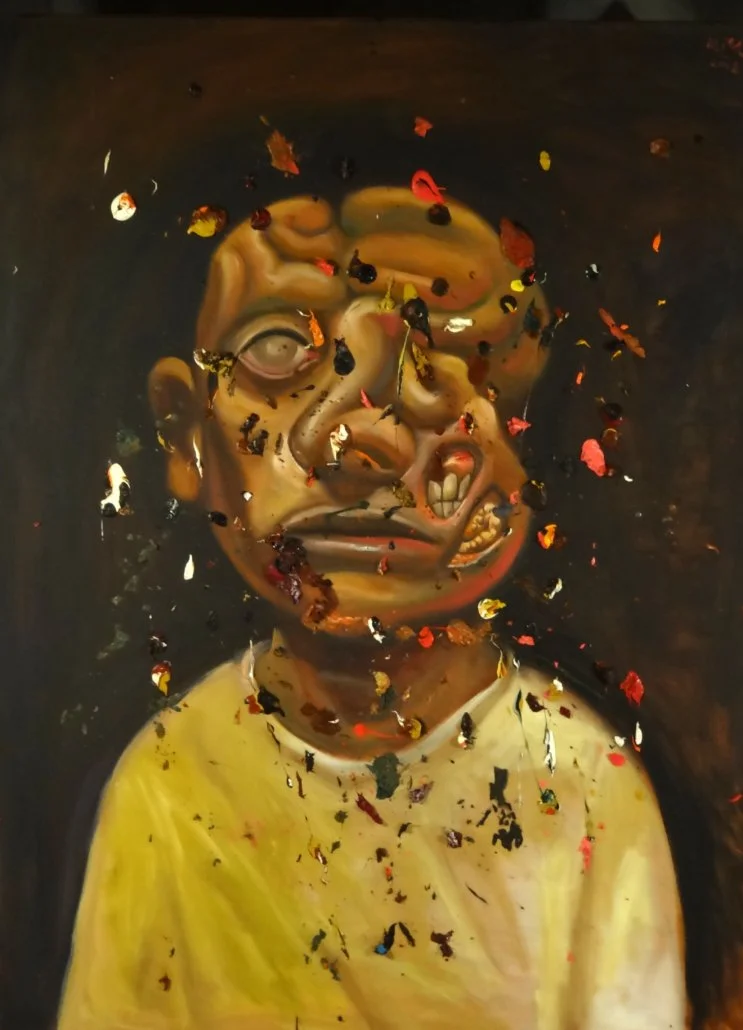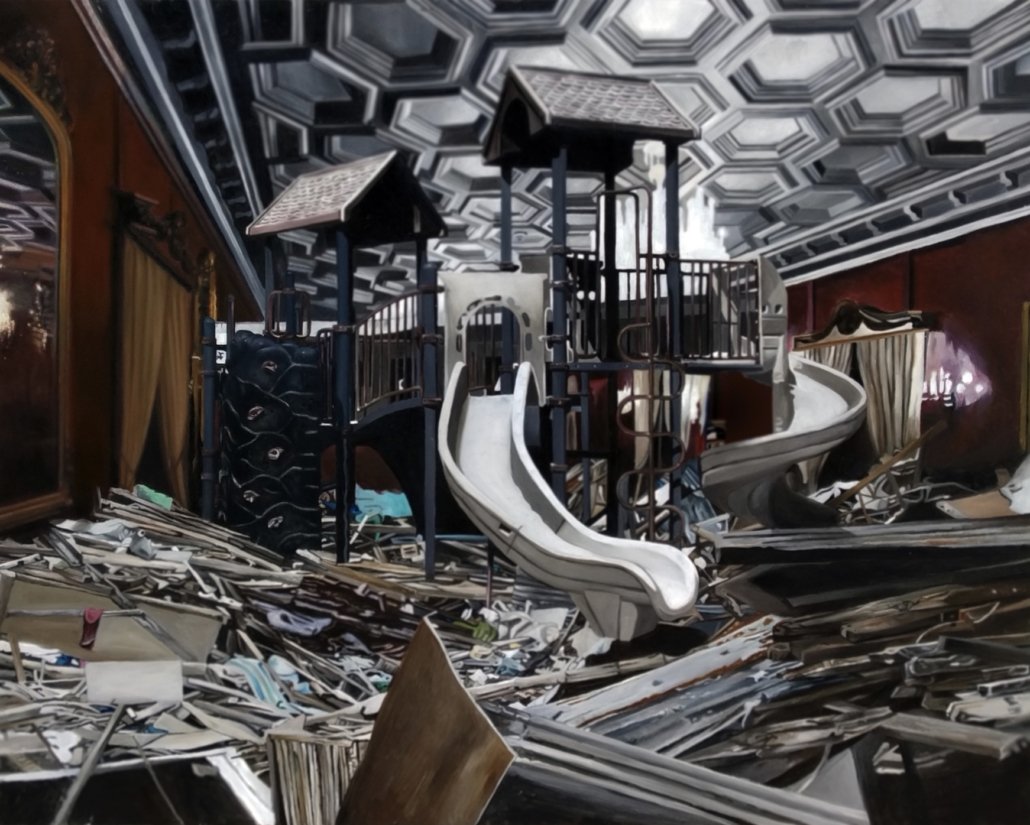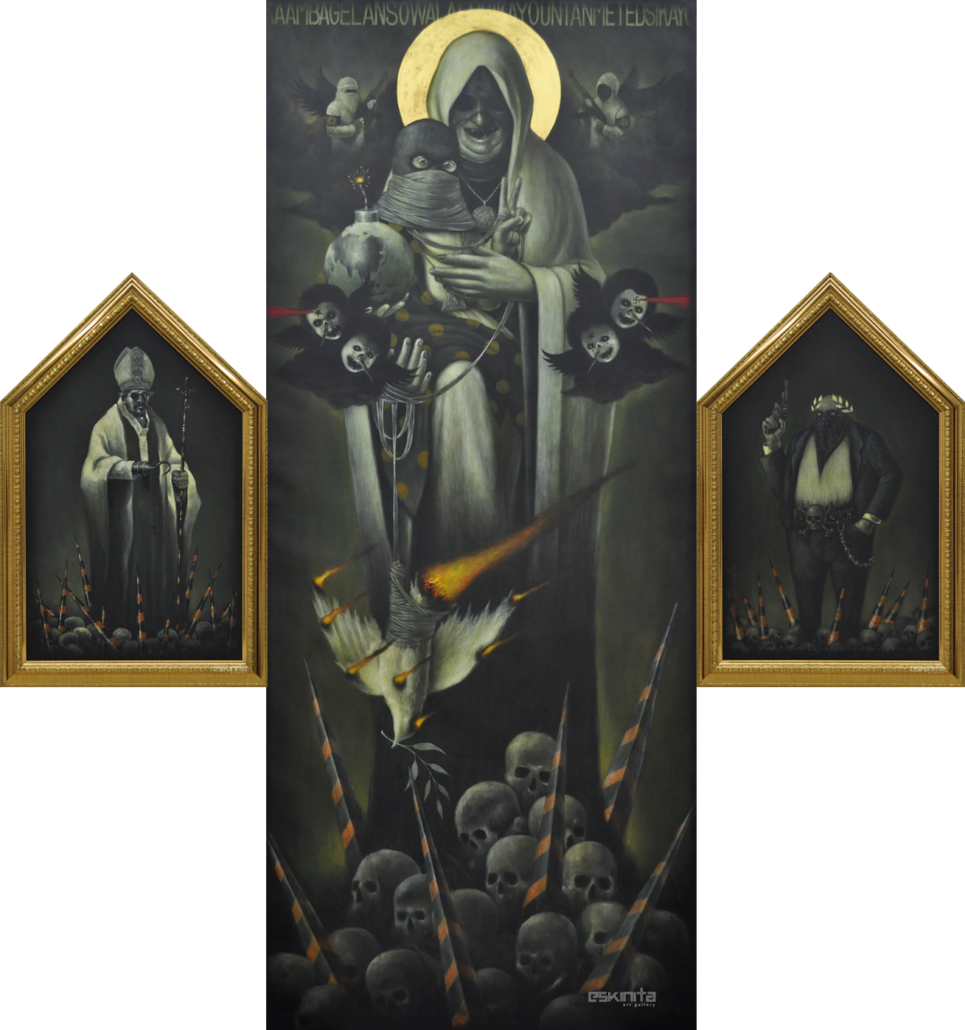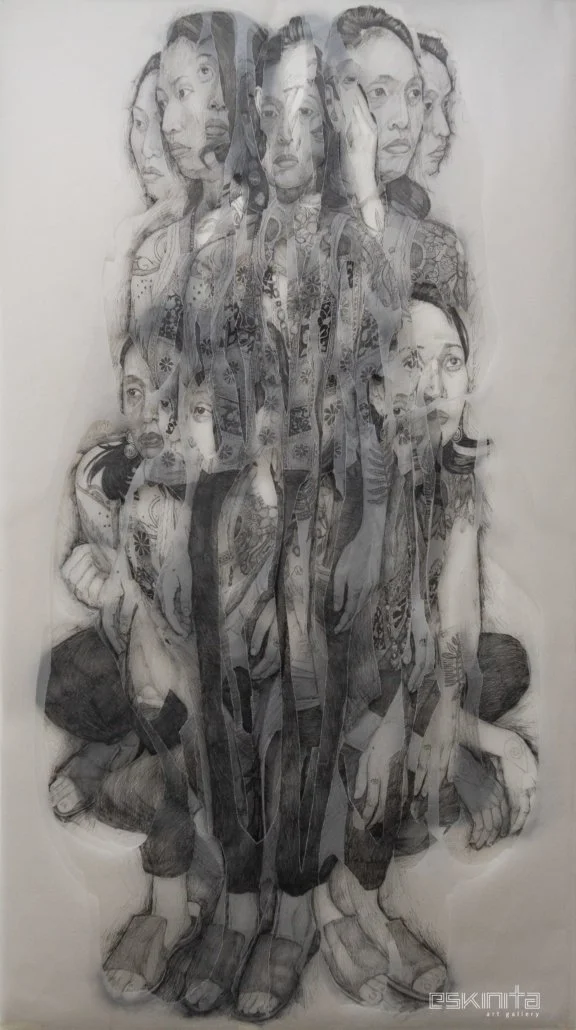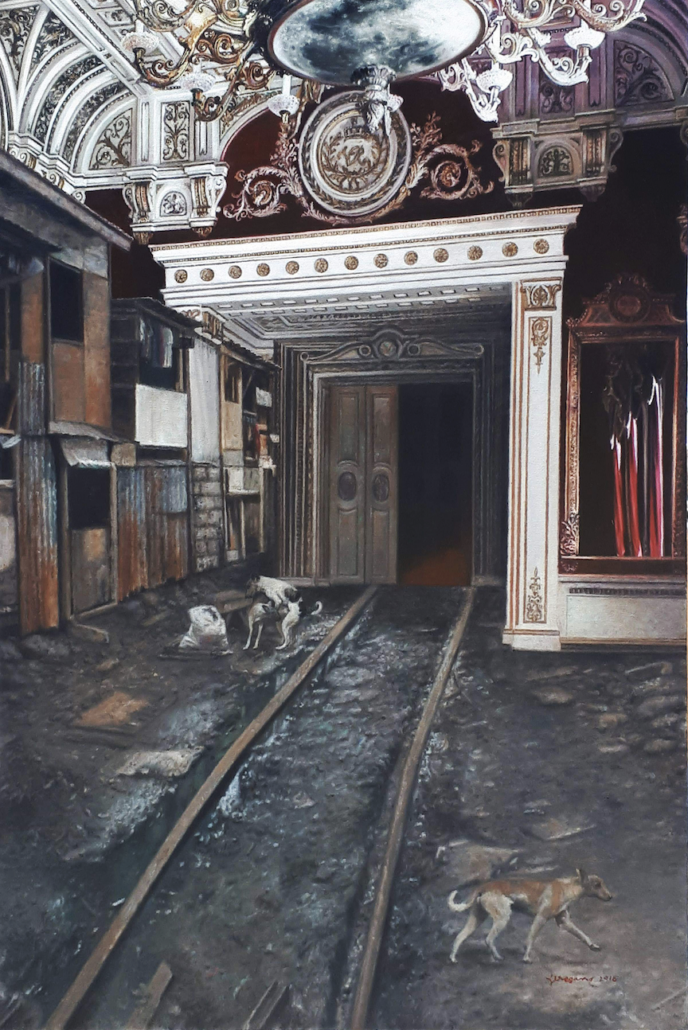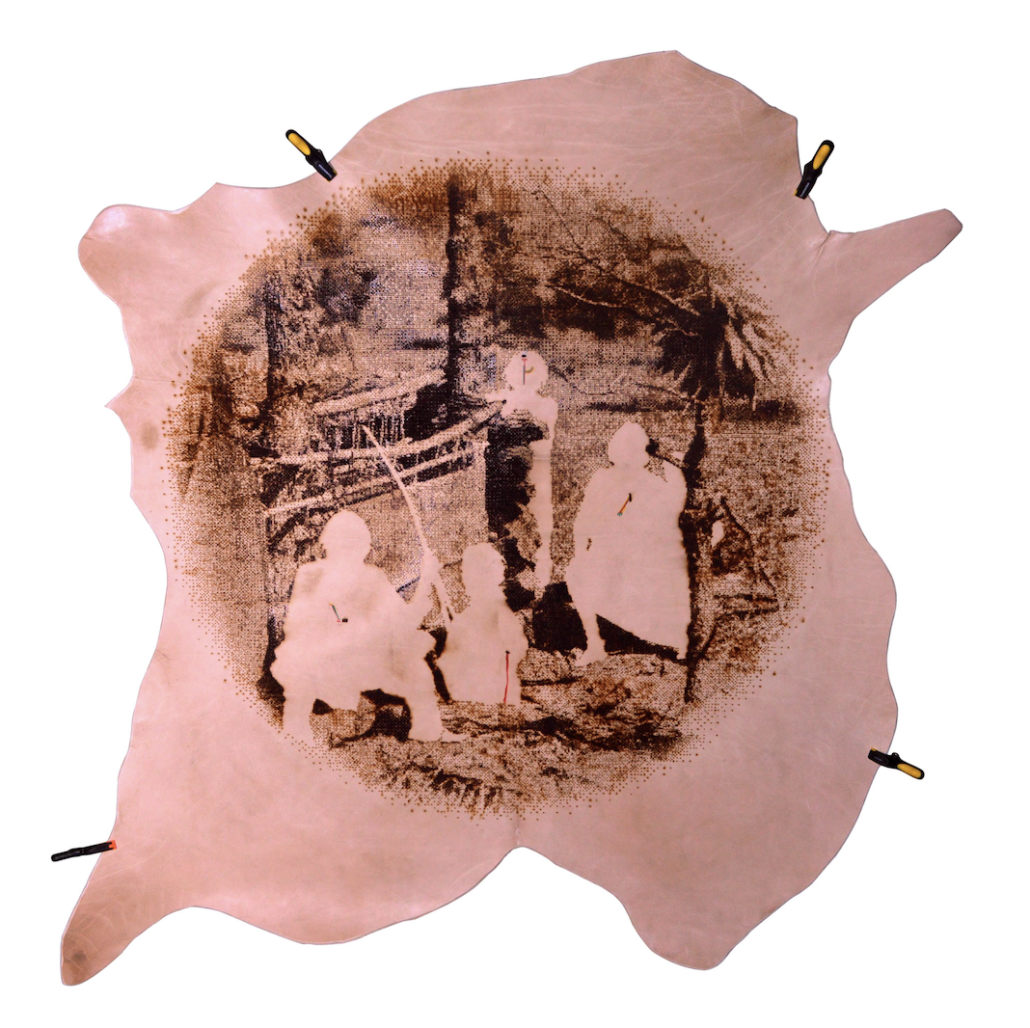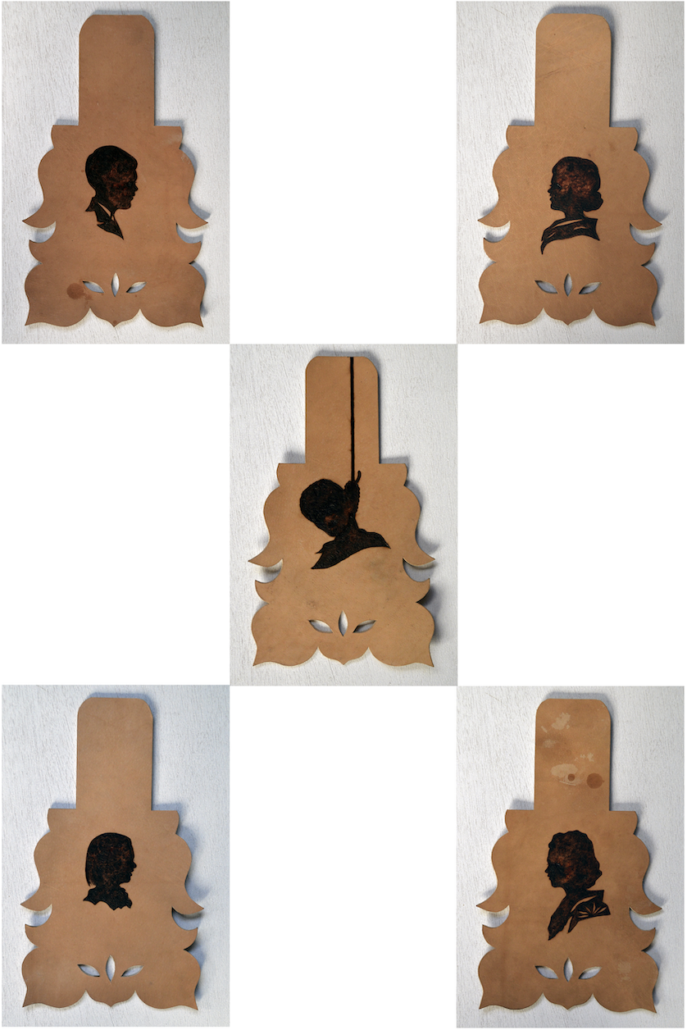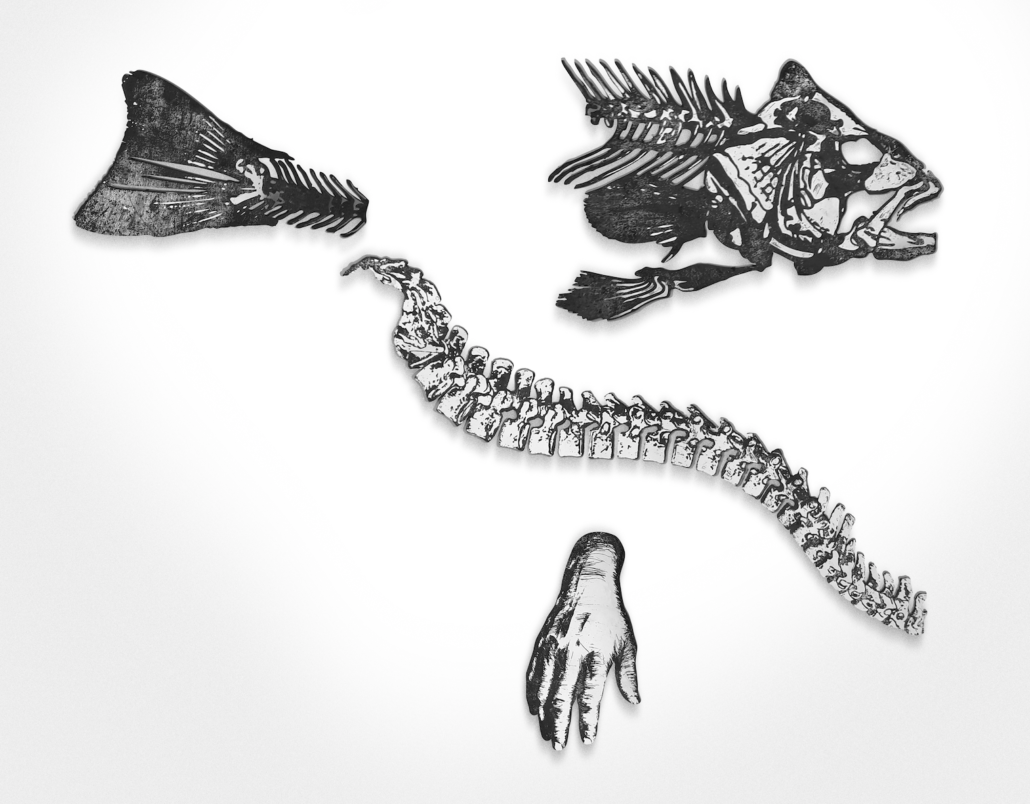
Simulacra
Alfredo Esquillo/ Lui Gonzales/ Dondon Jeresano/ Dengcoy Miel/ Leonardo Onia/ Arturo Sanchez/ Jojit Solano/ Anthony Victoria
February 2 to 15, 2019



Anthony Victoria
Frailty drives nobility from one’s abject existence. Victoria narrates the vain reality for corporeal relationship. In his work entitled Kalas, he deployed a wordplay of the filipino words lakas and kalas or strength and weakness respectively. He ventures on a theory that the absence of firm foundation ensues infirmity and feebleness, and to deny it is a pretense in a man.
Kalas, however, creates a paradox of weakness and strength as it also symbolizes that odd state of a phenomenon in which the void becomes eloquent, where the chain of daily gestures is broken, and a force vainly seeks the link that will connect again. Such is a metaphor for life, and the nuances representative of mankind. Through impressive endurance, the frailty brought about by the weak foundation in Kalas, simultaneously brings forth a whole new idea of deliverance from our own hands and virtue.
Leonardo Onia
The occurrence of uneventful days carries us into the mundane aspects of everyday life. Muted Language was a personal approach of Onia to assert oneself on his usage of a primordial language that used to be a part of him, which he had seemingly forgotten. Situating himself in relation to time, he finds himself realizing that which has silenced him of his past.
This revelation offers a far more fundamental inquiry on the absurdity of it all and pointlessness of having to reinvent it. What is one to conclude, and how far is one to go to elude nothing? And why should one voluntarily go into relapse despite futility?
Alfredo Esquillo
Esquillo’s works serve as a continuation of his ongoing interest in the concept of ‘loob’ or one’s inner self, and its essential role in search for spirituality. In Agony in the Garden 2, one can descry three figures in the course of cracking – the mask, the shell, and the portrait itself. The dark red pump appeals discord to one’s psyche in an auditory sense.
The usage of the same floral figures on and within the frame invokes the ambiguity of being and having – of the work possessing the agony, or the work itself as the agony. The human, the mechanical figures and the trompe l’oeil situated within the frame reinforces this obscurity.
Lui Gonzales
The points of human contact and the notion of human sensibilities are highlighted in Mara with Ink in Ink. As it attempted to put the subject in the center by capturing its every gestures and peculiar whims, Gonzales also conferred an aspect of burdensome to it. The view service is then laced with the promise of eventual greatness, and a human thing to do in the context of intersubjectivity.
Art Sanchez
Sanchez made use of random images from various source of printed matters, cut and pasted, juxtaposed with one another to create a single story. Through this he creates a various layer of shifting narratives. The Heavy Ground series tells a story about the remarkable agony, feeling of loss, endless sorrow and sense of emptiness that has now been concretized and actualized in the labored breathing and writhing of the subjects consumed by the collage work.
Heavy Ground explores these emotions. With the mind’s deepest desire, even in its most elaborate operations insists upon a familiarity, and an appetite for clarity. That nostalgia for unity and that appetite to explore illustrates the essential impulse of the human drama. Heavy Ground also proposes a full realization that human beings can love and suffer. And what does it mean to be human amidst the atrocities around us?
Dengcoy Miel
Miel is fascinated with the bilocation of bodies in the physical and the spiritual. He proposes an inquiry into these systems where the body is negotiated as an object, space and territory – a relic to embody the intangible, and fragmentary dimensions of Faith.
Kulangot describes a desperate metonymic cry over things that are dysfunctional. Hence in Philippine culture, phrases like “Philippine snot a democary, “Philippines snot a province of China”, and so on remain to perpetuate. Reliquario seeks to understand the morbid fascination with the remains of Sinners who became Saints, of their bodies and parts of it as hierophanies or that which manifests the sacred. Rhacoporus Rizalii is the scientific name of the frog that Rizal has discovered, and the painting is the metaphorical funerary march of Rizal himself. From whence today he is dissected under the optics of a revisionist, and postcolonial eyes. From the moment the dichotomy is recognized, it becomes persistent, and the most harrowing of all.
Dondon Jeresano
Jeresano puts forward the opposing realm of Western and Third World countries in Kabilugan ng Buwan. The evident difficulty and tension of both parties are playfully exhibited in the landscape. The refined nature of the ceiling and the ragged appearance of the walls remain to be under one roof. Yet amidst this duality, the doorways of the houses still passionately embrace the failing sunset glow, and the dogs continue to gaze hungrily at one another. This perpetual darkness and struggle for survival symbolizes by the two significant occurrences in Kabilugan ng Buwan marks mortality as the common denominator of the two aforementioned parties.
With a resolute attitude to maim the opinions of others by sheer strength of will and stubborn pride one elevates himself to call the shots. This is a game that marked familiarity in Palaruang Pambansa as a representation of the current political government. People’s lack of intestinal fortitude to get their hands dirty and meddle in the affairs of the real, remarks the bleak nature of the playground and how it’s easily destructed. But those who are remembered for being catalysts for change, those who have monuments built in their name for fostering ideas worthy of realization and deeds worthy of emulation. But there are also those who are remembered so that no one else like them shall ever take the seat of power ever again.
Jojit Solano
Fear, sublimated as pride of an individual actually breeds a curious form of apathy where one’s grandiose self-image seeks to broadcast just how different and awesome one is as compared to others in a passive-aggressive kind of way. Through the proliferation of comedically-armed subjects and politically-charged background in Our Lady of Babylon, Solano successfully portrays a seemingly proper comportment of a leader.
Quite direct to the point, the artist sees the main root of terrorism and atrocities, and these are the people higher than the ones society claim to be as terrorists. For Solano, it’s actually the hegemonic figures that we know now, the figures who are at the highest pedestal who like the Babylons then, will go down in time.
-Karen Tesalona
